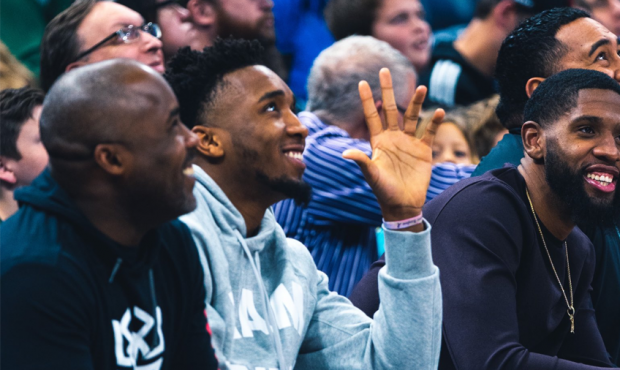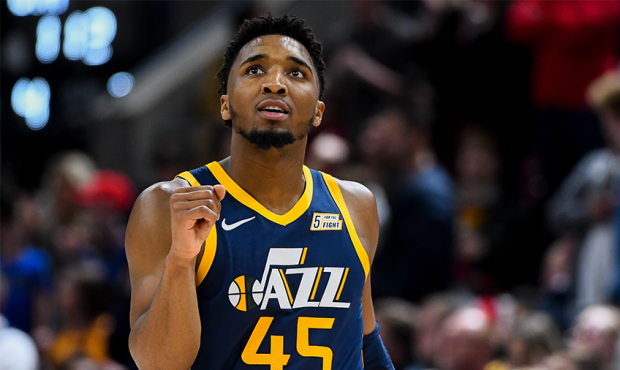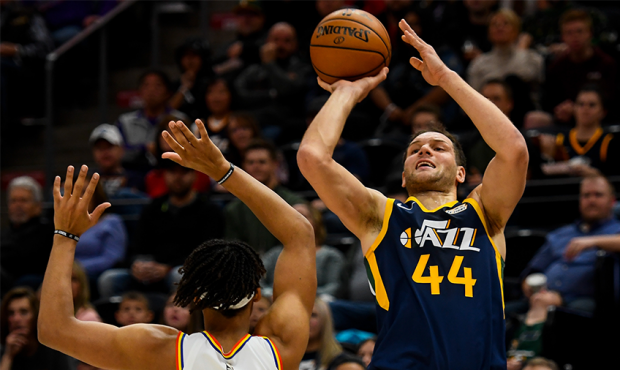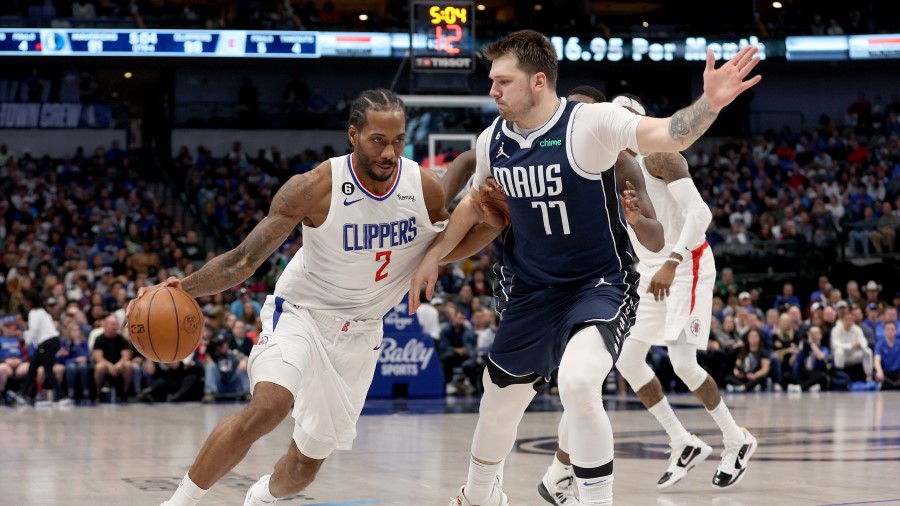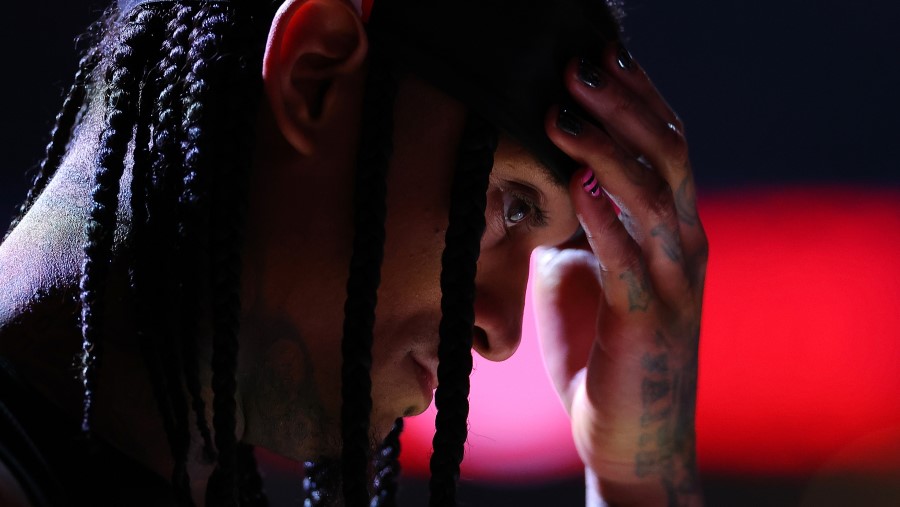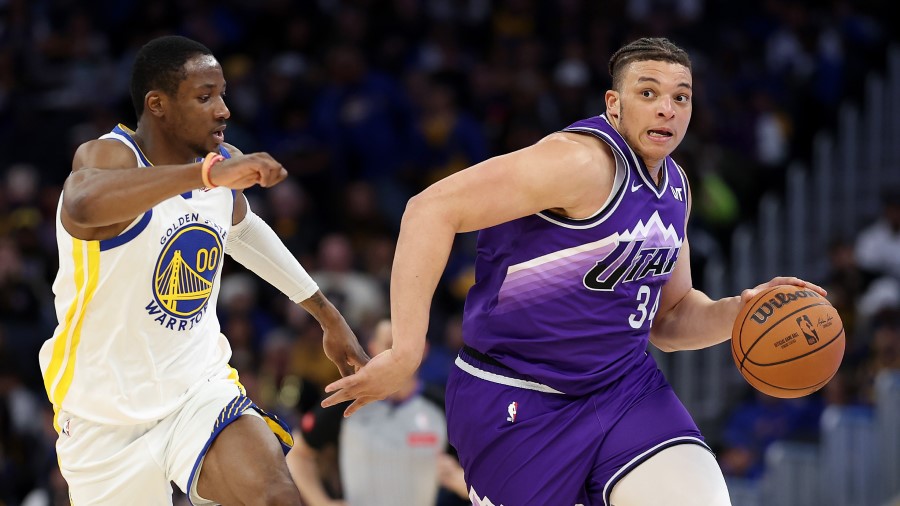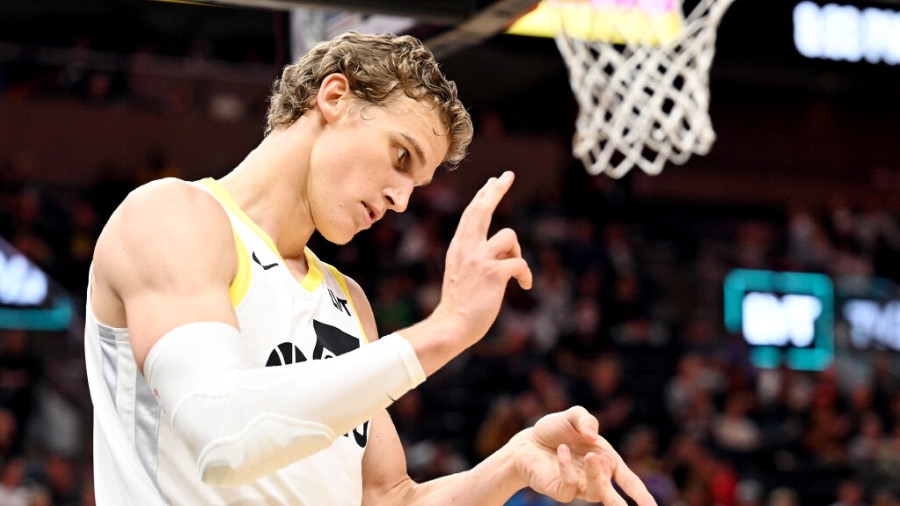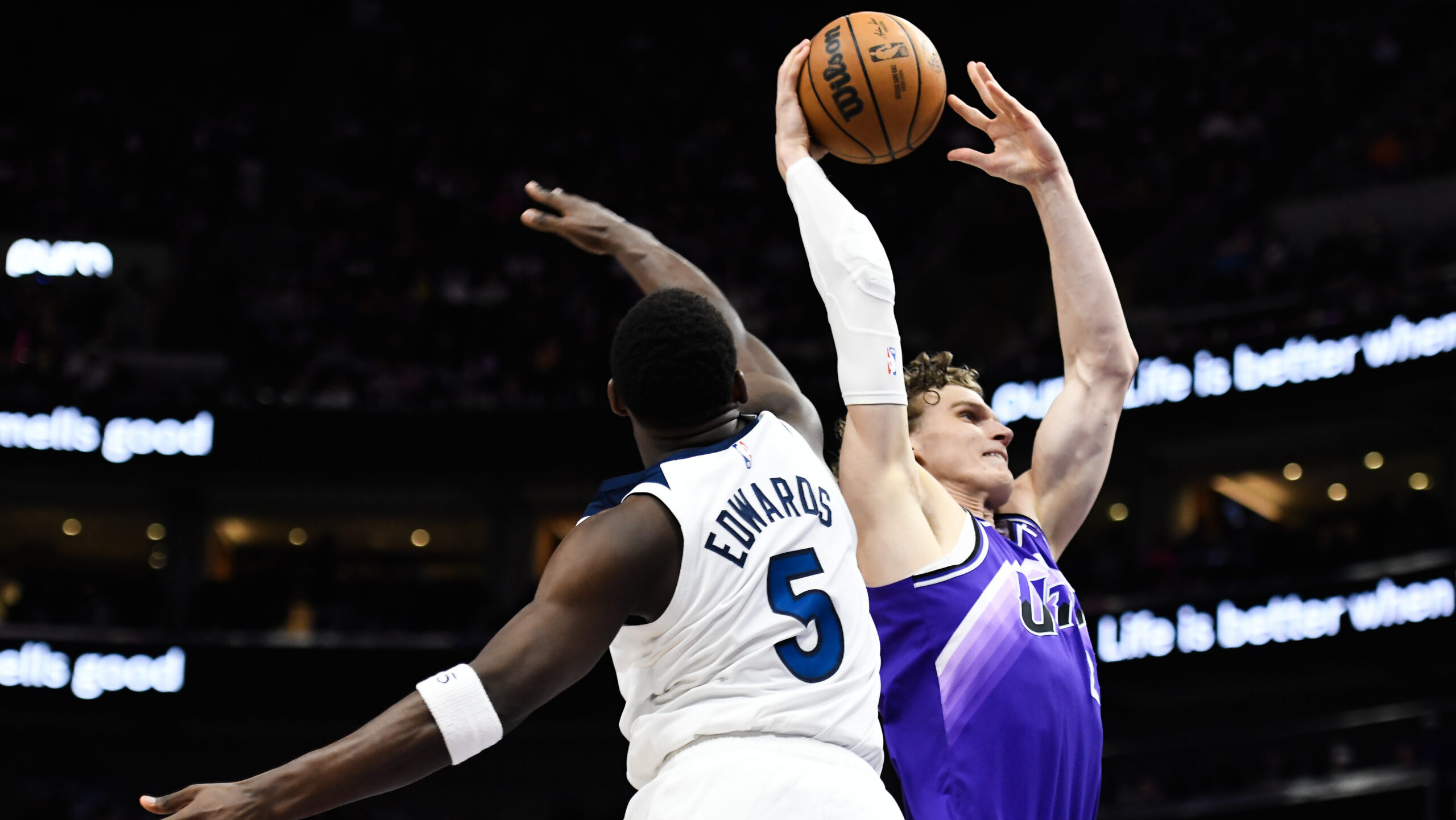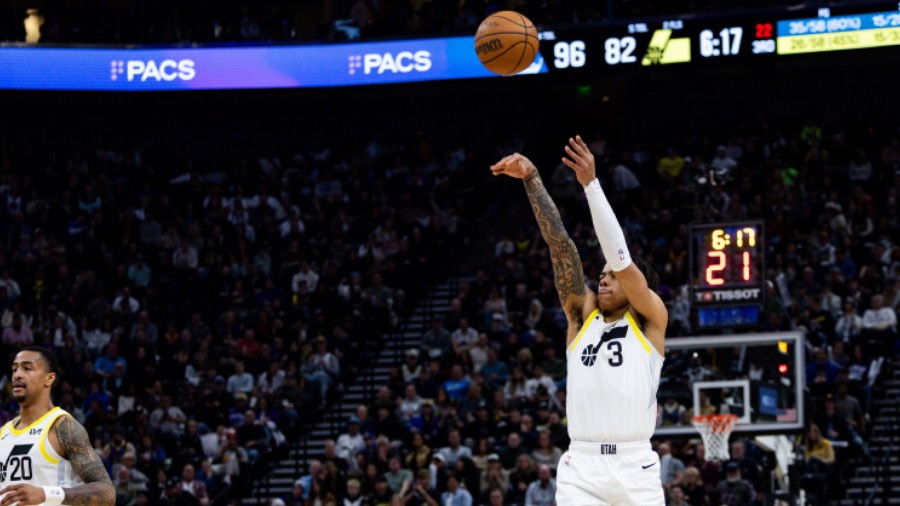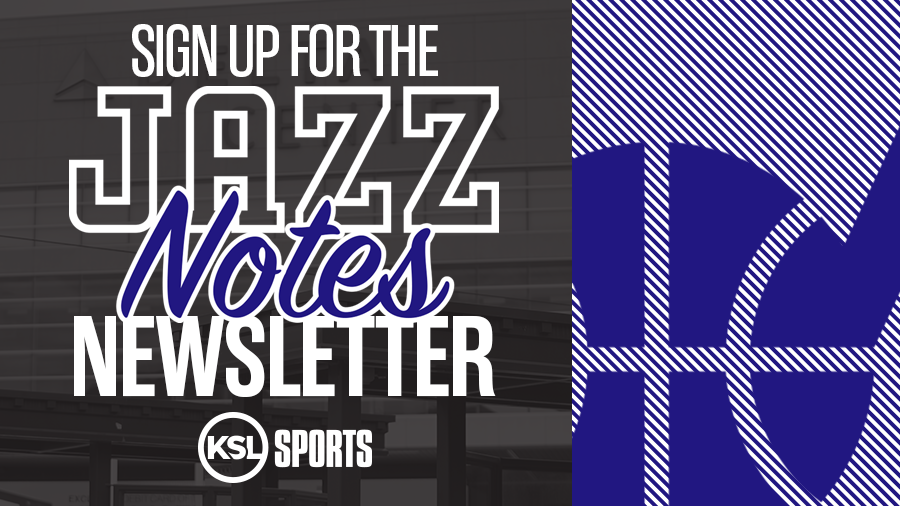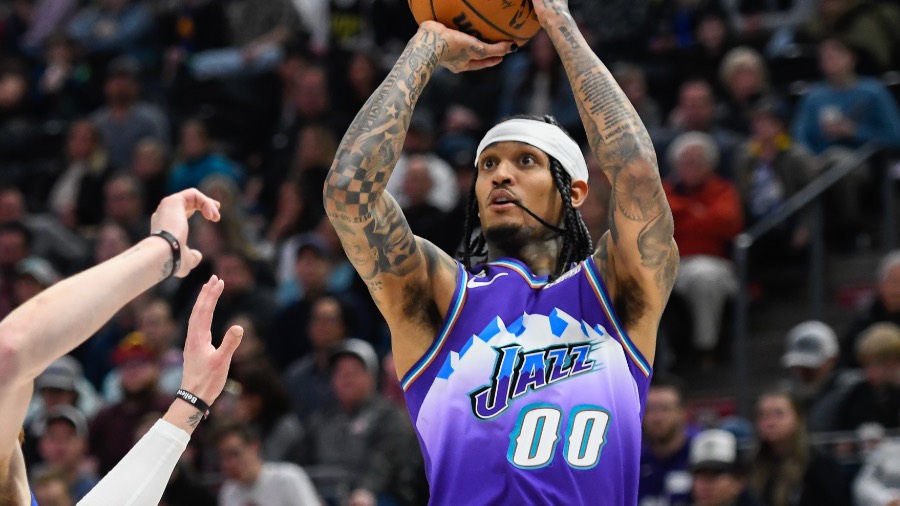Can Jazz Fix Their Bench Woes?
Dec 15, 2019, 1:28 PM | Updated: Dec 16, 2019, 12:11 am
SALT LAKE CITY, Utah – The Utah Jazz have a bench problem — the Utah Jazz have a major bench problem. Despite a starting lineup that regularly puts the team in a position to win games, the bench just as often surrenders those leads and the Jazz are finding themselves in close games against lesser competition.
As was the case Friday night against the Golden State Warriors, when each player in the Jazz starting lineup, Donovan Mitchell, Joe Ingles, Royce O’Neale, Bojan Bogdanovic and Rudy Gobert, had an average plus-minus of +19.8 in an average of 35 minutes. Meanwhile, the bench unit, made up of Emmanuel Mudiay, Georges Niang, Jeff Green, and Ed Davis, had an average plus-minus of -14.7 in an average of 16.2 minutes.
Between any individual Jazz starter, and any individual bench player, there was a 34.5 points swing on average in just 16 minutes on the floor. It’s a staggering number in any game, but even more so against a Warriors team that carries the worst record in the NBA.
Even more concerning, it seems to happen almost every night.
Average plus-minus of Mudiay, Niang, Green, and Davis for the Jazz over the last eight games.
Vs Golden State: -14.7
@ Minnesota: +12.7
Vs. Oklahoma City: -12
Vs. Memphis: +8.7
Vs. Lakers: -14.2
@ Philadelphia: -4
@ Toronto: -6
@ Memphis: -5.6 (Niang DNP)
Of the Jazz last eight games, since Davis returned from a fractured fibula, the bench has had a negative plus-minus in six outings. The bench is a -35.1 in the eight games, for an average of -4.4 per player.
The numbers are backed up when expanded for the entire season. The Mudiay, Niang, Green and Davis four-man lineup is the Jazz fifth-worst grouping that has played at least 30 minutes together for the season with a net rating of -23.3.
When adding Donovan Mitchell, the group is the second-worst five-man unit with a net rating of -22.5.
When asked about the second unit, Mudiay was short on solutions but indicated the team was working on finding answers.
“I don’t know, thats a good question,” Mudiay said, “I guess that’s why we’re trying to figure it out.”
It’s a troubling trend for a team that hasn’t shown to have any bench players in waiting that are an obvious solution to the problem. Dante Exum, who has been in and out of the lineup, has a -1.5 plus-minus average in 11 games. Tony Bradley, the Jazz only other bench player who has received anything resembling regular minutes has a -1.2 average plus-minus
By comparison, Niang has a per-game plus-minus average of -3.5, Green is -3, Davis is -2.6, while Mudiay has a positive average of +.3
Jazz guard Mike Conley offered his thoughts on the second unit, as he’s watched from the bench nursing an injured hamstring.
“We pride ourselves on taking care of each possession, and I think we tend to compound mistakes in those positions. We’ll turn it over a few times and it leads to easy transitions baskets which is hard to defend,” Conley said.
“Then we’ll even come back down on offense sometimes and take some quick shots or do something that might be out of character that kind of helps build that lead. ”
Mike Conley offered some insight on what the team is working on to get the second unit jump started. pic.twitter.com/XMFJrEwTqF
— Ben Anderson (@BensHoops) December 15, 2019
The issue is further complicated by the fact that it may be tough for the Jazz to improve the bench on the trade market. Part of the reason the Jazz second unit has struggled so mightily is that it’s made up of players on minimum value contracts. Green, Mudiay, and Niang all make $2.5 million or less, meaning trading any one of those players will net the Jazz only a minimum value player in return.
Good players on low contracts are highly valued by their teams and aren’t made available in trades, while low impact players on small contracts wouldn’t improve the Jazz problem.
Davis makes $4.7 million, likely an easier contract to move while still getting returning value, but would leave the Jazz thin at center, unless they were to get a center in return. That makes a move unlikely as Davis has largely underperformed, and a trade partner wouldn’t choose to take on Davis’ contract in return for a more talented player.
In the case of Exum, who is owed nearly $10 million next season, it would likely be difficult to find a trade partner willing to acquire the oft-injured guard who has struggled to find the floor this season.
Adding more hurdles to the trade route is the Jazz lack of future assets. Teams that are able to make successful trades often have to include first-round draft picks in any deal where they acquire better talent. The Jazz have already traded away a future first-round pick to the Memphis Grizzlies when they acquired Conley in the offseason, which may give the front office pause in moving another future asset.
Otherwise, the Jazz options to improve may be longshots between auditioning 10-day contract players who can be signed as of January 5, or turning to rookies Miye Oni, Jarrell Brantley, Nigel Williams-Goss, or Justin Wright-Foreman in hopes that one of the team’s young prospects may be the key to increased bench production.
Before the Jazz make any roster moves, coach Quin Snyder will likely continue to toy with the team’s rotation to find enough winning combinations throughout the game to improve the bench or mitigate trouble areas. That could include a more radical change of moving one of the team’s regular starters into a reserve role to better balance the talent out throughout the roster.
However, there is one potential outlier that may solve the Jazz problems, and it’s as simple as the team getting fully healthy.
With Conley sidelined, Niang has been moved into the bench rotation, and the second unit has struggled significantly. With Conley in the lineup, Ingles pushed back to a reserve role, and Niang sidelined, the five-man bench unit of Mitchell, Mudiay, Ingles, Green, and Davis has the Jazz best net rating of any five-man combination at +48.2.
The Jazz are solidly in the Western Conference playoff chase, even with the struggles off the bench. Before any drastic measures are taken, it’s likely the team will look to see if the reserves improve as the sample size of the season increases. However, if the bench unit continues its struggles, even as the team comes back to full-strength, fixing the back end of the rotation may be a difficult task.

